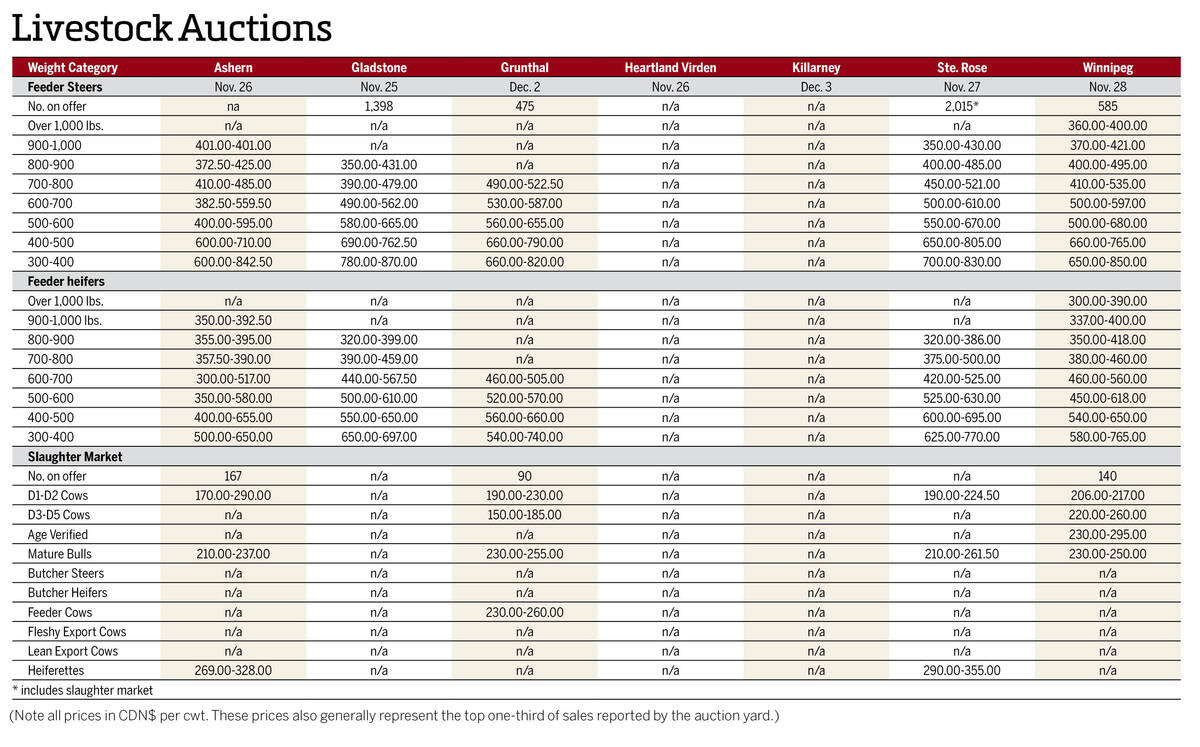ICE Futures canola contracts climbed higher during the second week of July, with the most-active November contract gaining roughly $200 per tonne in less than two months to hit its strongest level since January.
The ongoing uptrend in canola saw futures break through their 200-day moving average during the week, with speculators covering short positions and moving to the long side of the market behind some of the activity.
With the November contract firmly above $800 per tonne, the next upside targets come in at $840 and then again around $880.
Read Also

Manitoba cattle prices, Dec. 3
Cattle prices from Manitoba’s major livestock auction marts during the week Nov. 25-Dec. 2, 2025.
Weather concerns across the Prairies were driving the rally, as persistent dryness in western regions cuts into yield prospects. With little precipitation in the long-range forecast, premiums could build in canola.
However, canola is also starting to look overbought, according to some technical indicators, with additional strength likely dependent on outside forces such as the Chicago soy complex.
The U.S. Department of Agriculture released updated supply/demand estimates on July 12, factoring in the June 30 acreage data. The government agency left its soybean yield estimate unchanged at the historically high level of 52 bushels per acre, with both the resulting production and ending stocks numbers beating expectations.
The knee-jerk reaction was bearish, but by the next day soybeans were back testing the upper edge of their nearby trading range.
Total U.S. soybean production for 2023-24 was forecast at 4.3 billion bushels, down slightly from the June report, but above average trade guesses and the year-ago level. Soybean ending stocks for the current marketing year were raised to 255 million bushels, from 230 million in June, with the new-crop carryout at 300 million bushels. That is well above average trade guesses that were closer to 200 million.
Just like in Canada, hot and dry long-range forecasts are expected to cut into U.S. production prospects, with the likelihood of downward revisions to future USDA estimates.
Average U.S. corn yields were lowered to 177.5 bu./ac., down by four bushels from June, but still well above last year’s 173.3. Total corn production at 15.32 billion bushels compares with 13.73 billion last year. Corn ending stocks were forecast at 1.402 billion bushels this year and 2.26 billion next year.
Corn futures hit their lowest levels in two years at one point during the week but managed to uncover some support. Uncertain weather forecasts through the growing season are expected to keep values underpinned for the time being.
USDA raised its total U.S. wheat production estimate to 1.74 billion bushels, from 1.67 billion in June, which would be up by about 90 million bushels on the year. However, world wheat numbers showed some tightness, with available carryout supplies from major exporters forecast at their smallest levels in just over a decade.














